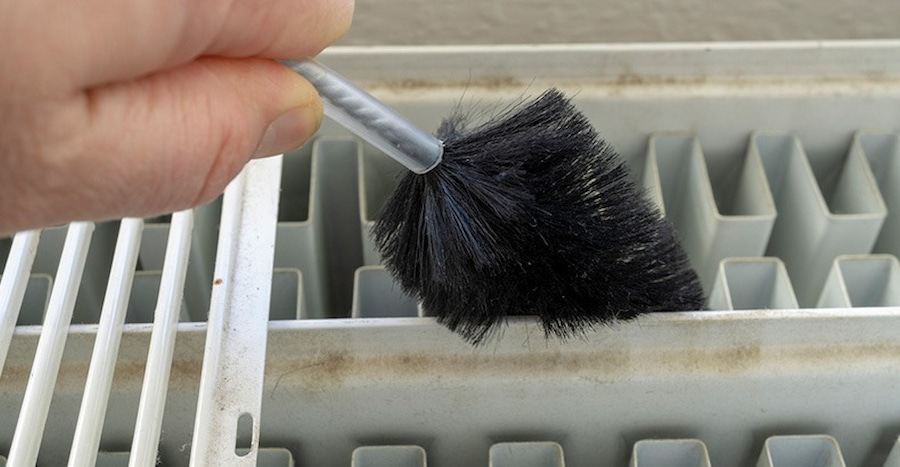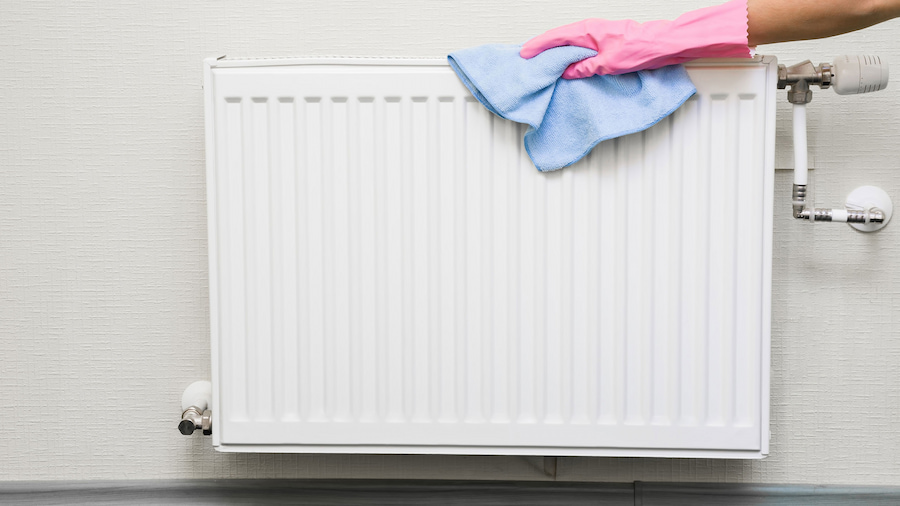Incorporating radiators into your weekly cleaning routine is a vital practice to stave off the accumulation of dust, dirt, and grime. Beyond the aesthetics, regular radiator maintenance plays a pivotal role in managing allergens and bolstering their overall efficiency. As we step into the spring cleaning season, it presents the ideal opportunity to address the often unnoticed build-up of dust and debris within and around your grey vertical radiators.
Cleaning radiators is essential for maintaining efficient heating. Start by turning off the system and allowing it to cool. Use a vacuum or brush to remove dust and debris, then wipe with a damp cloth. Regular cleaning ensures optimal performance and a cozy, dust-free environment.
These unsuspecting collectors tend to harbour contaminants brought in from the outdoors, residue from cooking, and even particles from smoking. By diligently cleaning radiators, you not only enhance their functionality but also contribute significantly to maintaining superior indoor air quality, ensuring a healthier and cosier living environment. Here are five steps to clean radiators and remove dirt and dust:
Turn off the Heating:
To begin, ensure your radiator is at a completely cool temperature before embarking on the cleaning process. It’s crucial to turn off your heating system for safety reasons and to prevent the radiator from drawing in additional dust while you clean it. This not only avoids the risk of burns and accidents but also contributes to a more effective cleaning process.
Allowing the radiator to cool down adequately ensures that you can clean it without any heat-related hazards and minimises the likelihood of dust resettling on the surface during your efforts. Taking these precautions sets the stage for a safer and more thorough radiator cleaning experience.
Gather Supplies And Vacuum The Dust:
Prepare your cleaning arsenal by gathering essential tools and materials: a vacuum cleaner equipped with a brush attachment, a microfiber cloth, a radiator brush or a slender paintbrush, a basin of warm, soapy water, and a handy towel.
To begin, employ the vacuum cleaner with its brush attachment to delicately eliminate loose dust and debris from both the surface of the radiator and its immediate surroundings. Take particular care when addressing the radiator’s fins or ridges. Afterwards, navigate the vacuum cleaner into the intricate spaces of the radiator to extract as much dust as possible.
Attending to the radiator’s fins can be a challenge, but the smaller vacuum attachments prove invaluable in this regard. Be thorough, aiming to capture any concealed dust lurking behind, not overlooking the area beneath the radiator and its juncture with the wall. This meticulous approach ensures a comprehensive dust removal process.
Dust With A Dry Cloth Or Brush:
Use a radiator brush or a long, narrow paintbrush to get into the narrow spaces between the radiator fins. Gently brush away any remaining dust and dirt. You can also use a can of compressed air to blow out any trapped dust.
If you don’t have a dedicated radiator brush, no worries—grab a dry cloth instead; it works just as effectively. The goal here is to clear away any dust that may have settled on your radiator. If it’s been a while since your last radiator clean-up, expect a fair amount of grime. Use a dry cloth to gently wipe away the dust. Microfiber cloths are great for this job as they catch the dust easily.
Employ a quick and light wiping motion; there’s no need to press hard, or you’ll simply spread the grime around. This technique also proves handy for reaching dust lurking behind radiators. Placing a towel underneath can help catch any falling debris during the process.
Wipe Down The Outside:
To wrap up the cleaning process, prepare a bucket with warm, soapy water and use it to slightly dampen a soft sponge or cloth – avoid abrasive materials at all costs when dealing with a radiator. Carefully wipe down the exterior of the radiator with this damp cloth. Once you’ve completed this step, use a microfiber cloth to dry the radiator’s surface thoroughly.
First, dip the microfiber cloth into the soapy water, wring it out, and gently wipe away any remaining grime. Afterwards, rinse the cloth and give the radiator another wipe with clean water. To ensure the radiator is completely dry, employ a dry towel, leaving it in a pristine, dust-free condition.
Reaching Tricky Spots:
When dealing with hard-to-reach spots inside your radiator, even a radiator brush may have limitations. To tackle these tricky areas, employing a slim stick can prove quite helpful. Fasten a cloth to the end of the stick and manoeuvre it skillfully to address those challenging nooks and crannies. This method guarantees a thorough cleaning of your radiators, ultimately enhancing their efficiency and functionality.
Remember to be gentle while cleaning to avoid damaging the radiator. Regular maintenance like this will help keep your radiators running efficiently and improve the air quality in your home.
Also, read this: Colors and Style Tips for the Decor of Prefabricated Homes


